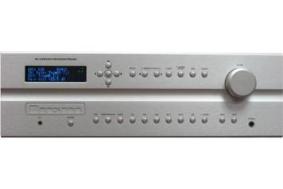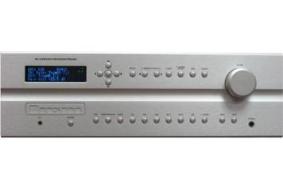US NEWS: Bryston showcases forthcoming processor at CEDIA Expo
New model will offer a range of three configurations up to 8-in-2-out HDMI capability, with video and audio processing


The two video-capable models will are expected to have eight HDMI inputs and a pair of HDMI outputs, while the audio-only version will have just one HDMI in and one out.
Other features slated for the SP3 are two pairs of balanced inputs, a set of 7.1 balanced outputs, a set of 7.1 single-ended outputs, six pairs of single-ended analog inputs, one set of 7.1 single-ended analog bypass inputs, one stereo single-ended analog bypass input, twin RS-232, Ethernet, infrared and microphone inputs, and a stereo headphone output.
The SP3 will also include several digital inputs, including optical, coaxial, and USB. There will also be an optical digital output provided.
Also new from Bryston is the BDA-1 digital-to-analogue converter, which will provide no fewer than eight digital inputs: two coaxial/electrical on phonos, two on BNCs, one on an AES/EBU XLR connector, two optical, and one USB,
It uses dual Crystal CS-4398 hybrid multibit/delta-sigma DAC chips, which operate in one of three oversampling modes based on the input sample rate. Single-speed mode supports input sample rates up to 50 kHz and uses a 128x oversampling ratio, double-speed supports up to 100 kHz and uses 64x oversampling, and quad-speed mode goes up to 200 kHz and uses 32x oversampling.
The BDA-1 also features impedance matching transformers and reclocking/resampling to avoid jitter, and uses a discrete Class A analogue stage.
Finally, Bryston has a new range of Hybrid Zone Amplifiers, designed for use in multiroom applications. These use a combination of Class D amplification and Bryston's own linear power supplies, and each provides eight channels of power amplification.
Get the What Hi-Fi? Newsletter
The latest hi-fi, home cinema and tech news, reviews, buying advice and deals, direct to your inbox.
The first two models, launched at CEDIA Expo, are the D-130Z and D-250Z: the D-130Z delivers 8x130W into 4ohms, or 8x90W into 8ohms, while the D-250Z delivers 8x250W or 8x150W respectively. 8x90W and 8x400W models will join the range later.
